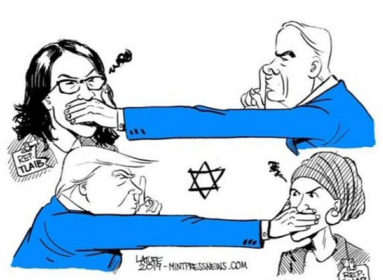March 12 Symposium will feature Rwanda President Paul Kagame
By Cindy Mindell
WEST HARTFORD – In 1979, the first academic institution dedicated to Holocaust and genocide studies opened in Jerusalem. Founded by Israeli scholars Israel W. Charny and Shamai Davidson z”l, together with Nobel Laureate Elie Wiesel, the Institute on the Holocaust and Genocide may also be the first whose researchers linked the two phenomena in their studies.
Now, the landmark institution is joining forces with the University of Hartford’s Greenberg Center for Judaic Studies, the result of a shared vision between Charny and Greenberg professors Richard Freund and Avinoam Patt.
Charny, who serves as executive director of the Institute on the Holocaust and Genocide, trained as a clinical psychologist in the U.S. in the 1950s and made aliyah a decade later. Engaged in the study of the Holocaust since the mid-60s, his first article on the subject, published in Jewish Education in 1968, was “Teaching the Violence of the Holocaust: A Challenge to Educating Potential Future Oppressors and Victims for Nonviolence.” He is a retired professor of psychology and family therapy at Hebrew University of Jerusalem and Tel Aviv University.
Charny bases his work on the belief that an understanding of the processes that brought about the Holocaust be joined with the Jewish tradition of contributing to the ethical development of human civilization, and that a unique memorial to the Holocaust be created in the development of new concepts of prevention of genocide to all peoples.
The institute organized the First International Conference on the Holocaust and Genocide in 1982, despite efforts by several governments to close down the event. The government of Turkey threatened reprisals against Israel and Turkish Jews should the conference program include lectures on the Armenian genocide. (Conference organizers went ahead with their original agenda.)
From 1985 to 1995, the institute published “Internet on the Holocaust and Genocide,” the first interdisciplinary and interethnic newsletter on the study of genocide, edited by Charny. Other projects included the first Holocaust and Genocide Bibliographic Database software, produced for the United States Institute of Peace in 1994, the Encyclopedia of Genocide (ABC-Clio Publishers, U.S. 1999; UK 2000), and Genocide: A Critical Bibliographic Review, published in six editions. Both the inaugural volume of Genocide: A Critical Bibliographic Review and the Encyclopedia of Genocide received the “Outstanding Academic Book of the Year” award by Choice, the review magazine of the American Library Association, as was Fascism and Democracy in the Human Mind (University of Nebraska Press, 2006) by Israel Charny.
The institute produces GenocidePreventionNow.org, a website and Internet journal funded by a grant from the Carnegie Corporation of New York. Edited by Charny, the site serves as both an educational resource and a warning system for potential and ongoing acts of genocide.
Now 81, Charny is preparing to retire. Last summer, he discussed future plans with Freund and Patt, who suggested that the center continue the institute’s work. Patt, who is Philip D. Feltman Professor of Modern Jewish History at the center and director of the center’s Museum of Jewish Civilization, serves as point-person for the project.
“We’re especially interested in teaching genocide prevention – that’s our strong suit – and in expanding the areas of the website which address education,” Patt says. “Israel was very happy to know that we’d make sure to link teaching about genocide to teaching about the Holocaust. As a pioneer of genocide studies, and because of his passion and commitment to Holocaust education and making ‘Never Again’ really true, Israel is concerned that genocide studies have forgotten about the Holocaust. At the same time, the Holocaust does not exist in a vacuum, and we must discuss its contemporary relevance as well.”
As part of its longstanding Holocaust education focus, the Greenberg Center hosts an annual workshop for educators and presents awards for innovative Holocaust education curricula. Patt heads up the Connecticut Consortium for Holocaust and Genocide Education, which is seeking to get Holocaust and genocide education mandated in the state of Connecticut. “Our hope is that, when teachers are required to teach these subjects, they’ll have the resources to do so effectively,” Patt says.
The Genocide and Holocaust Education initiative will bring GenocidePreventionNow.org to the Greenberg Center and engage a group of academics in Israel, Europe, and Australia.
Like Charny, Patt believes that Holocaust and genocide education should be linked.
“In studying the Holocaust, we often hear the words ‘unprecedented’ and ‘unique.’” Patt says. “What was unprecedented about the Holocaust was that the most modern, civilized country at the time could use machinery to organize mass murder. That had never been seen before. In our excavation project at the Sobibor extermination camp, we see that this machinery of mass murder was also used on the backwater frontier of Poland and in the forest.
But the problem with assigning the word “unique” to the Holocaust, Patt says, is that it precludes our capacity to examine other genocides and make comparisons.
The term “genocide” was coined by Polish-Jewish attorney Raphael Lemkin in 1944 to describe the 1915 massacres of Armenians and Assyrians, and the destruction of European Jewry during World War II. “There was a need to come up with a term to define this crime and to enable and allow the international community to put the perpetrators on trial,” Patt says. In that way, the world was able to identify the steps in the process that led to genocide, both of European Jewry and in other cases.
“They’re not the same and the Holocaust is unique in many ways,” Patt says. “But as a historian, I always want to leave room to explore what we can learn from two discrete events, what we can learn from before World War II, that can help us prevent future genocides.”
In addition to the educational component, the new Holocaust and genocide initiative will also develop “In Our Own Words,” a large scale, global interview project focused on second and third generation Holocaust survivors and descendants of refugees and victims of genocide.
The oral history endeavor is inspired by the Greenberg Center’s 2011 program, “After the Trauma: Holocaust Survivors and Laotian Refugees Confront the Past,” a photo exhibition and related panel discussion involving the Jewish and Laotian communities of Greater Hartford.
“When you look at children and grandchildren of Holocaust and other genocide survivors, the two groups can learn a lot from one another about how to recover and how to rebuild their society,” Patt says.
Jewish Holocaust survivors left Europe and rebuilt their lives in other parts of the world, but the situation is more complicated in Rwanda, Patt says, where perpetrators and survivors live side by side and must learn to rebuild and memorialize together.
The Greenberg Center submitted several grant applications to help fund the new program, one of which would be used to foster an exchange program with Rwanda. Dr. Joe Olzacki, former director of visual and performing arts for the Bloomfield public schools, and co-founder with Rabbi Philip Lazowski of the Identity Project on Holocaust and genocide education, will work with the Greenberg Center as special advisor on genocide education.
Through the Identity Project, Olzacki forged relationships with the Rwandan government, arranging visits of the country’s ambassador to Bloomfield and being selected for the 2011 UNESCO-sponsored Global International Leadership Training Programme in Rwanda.
Comments? email cindym@jewishledger.com
Teaching about Genocide and the Holocaust: A panel discussion on genocide prevention now
Rwandan president to speak
The Greenberg Center’s Genocide and Holocaust Education Initiative kicks off on Mar. 12, when Rwanda president Paul Kagame visits the University of Hartford campus to participate in an academic symposium on the aftermath of genocide, and to give a public lecture.
President Kagame will discuss “Vision 2020” at the university’s Lincoln Theater at 11 a.m. Tickets are free and available through the theater box office by calling (860) 768-4228. Tickets must be ordered by Friday, March 8. For security purposes, tickets must be picked up at the box office by the person in whose name they are reserved.
A panel discussion on the aftermath of genocide at 3:30 p.m. in the university’s Wilde Auditorium will be open to the community, including area high school and middle school students, and will feature local scholars.
In the fall, the Greenberg Center will debut “Dreams and Nightmares: Genocide Prevention Now and Israel W. Charny,” an exhibition on the scholar’s life and work.
For more information call (860) 768-4964.








 Southern New England Jewish Ledger
Southern New England Jewish Ledger













